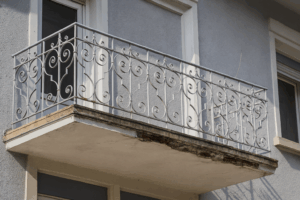
Elevators are a claustrophobic person’s greatest nightmare, but anyone can find themselves at risk when something goes wrong inside an elevator or on an escalator. A sudden jolt, a misaligned stop, or a mechanical failure can turn an everyday ride into a dangerous situation. Escalators present their own hazards, from loose clothing or footwear getting trapped in moving steps to sudden falls that cause serious injuries.
Arizona law sets strict safety rules for the installation, maintenance, and operation of elevators and escalators. These regulations exist to protect riders, and when they are not followed, accidents may lead to serious injuries and costly consequences.
In this article, we’ll explain who regulates elevators in Arizona, what codes apply to their safety, how liability works after an accident, and what steps you can take if you’ve been injured in an elevator or escalator incident.
Elevator and escalator accidents often share one theme: something went wrong that should have been preventable. In many cases, injuries are linked to mechanical problems, poor upkeep, or hazards that weren’t properly addressed.
For elevators, some of the most frequent causes include:
Escalators present different risks, with accidents commonly arising from:
Other factors that contribute to accidents across both systems include:
The Industrial Commission of Arizona (ICA) administers elevator and conveyance safety under Title 20, Chapter 5, Article 5 of the Arizona Administrative Code. Through these rules, the ICA adopts nationally recognized standards for elevators, escalators, dumbwaiters, moving walks, material lifts, special-purpose personnel elevators, and dumbwaiters with automatic transfer devices.
In Arizona, the people who own and operate elevators and escalators carry a clear legal duty: keep the equipment safe for everyone who rides it. This responsibility goes beyond simply installing the system and hiring a maintenance company.
Importantly, this duty cannot be delegated away. Even if a property owner contracts with an outside service company, the owner remains legally responsible if safety standards aren’t met. If you’re injured, it’s the owner or operator who will be held accountable in court.
Not every accident leads to a lawsuit, but when negligence or defective equipment is involved, injured riders may have the right to file a claim. In Arizona, these cases typically fall into a few categories:
When unsafe property conditions cause harm, such as broken doors, uneven stops, or poorly lit access areas.
When the injury stems from a defect in how the elevator or escalator was designed, manufactured, or installed. These cases often involve the equipment manufacturer or installer.
When service providers or property owners skip inspections, fail to follow ASME standards, or ignore known safety issues.
If you’ve been injured in an elevator or escalator accident in Arizona, the law allows you to seek compensation for the ways the incident has affected your life. The exact amount depends on the severity of your injuries and the evidence you can provide, but most claims cover both financial losses and personal suffering.
Working with an attorney ensures all of these damages are fully calculated and backed by medical records, employment documentation, and expert testimony where needed.
Being trapped in an elevator is frightening, but whether you can sue depends on what harm resulted from the incident. Simply being delayed in a stalled elevator usually isn’t enough for a claim. Instead, Arizona law requires that you show actual injury. either physical or psychological.
You may have a valid claim if:
If any of these apply, you can pursue a claim against the building owner or operator, and in some cases, the maintenance company responsible for the elevator. An attorney can review the details of your experience, gather maintenance logs and emergency response records, and determine the best path to compensation.
Yes, you can file a claim if your accident was caused by negligence, faulty maintenance, or defective equipment. Arizona law requires elevator and escalator owners to follow strict safety codes, keep up with inspections, and make sure emergency systems work properly.
When they fail to do this and someone is injured, the law gives victims the right to pursue compensation.
If you’ve been injured on an elevator or escalator in Arizona, knowing where to start can be difficult. These cases often involve multiple parties, from property owners to maintenance companies, and determining responsibility requires careful investigation.
An experienced attorney can help by reviewing inspection reports, maintenance records, and safety code compliance to establish fault and strengthen your claim. With legal guidance, you can focus on recovery while pursuing compensation for medical costs, lost income, and the long-term impact of your injuries. For tailored advice, reach out to an Arizona elevator and escalator accident lawyer for a FREE CONSULTATION. We cover all areas of California, Arizona, Georgia, and Texas.






Thompson Law charges NO FEE unless we obtain a settlement for your case. We’ve put over $1.9 billion in cash settlements in our clients’ pockets. Contact us today for a free, no-obligation consultation to discuss your accident, get your questions answered, and understand your legal options.
State law limits the time you have to file a claim after an injury accident, so call today.